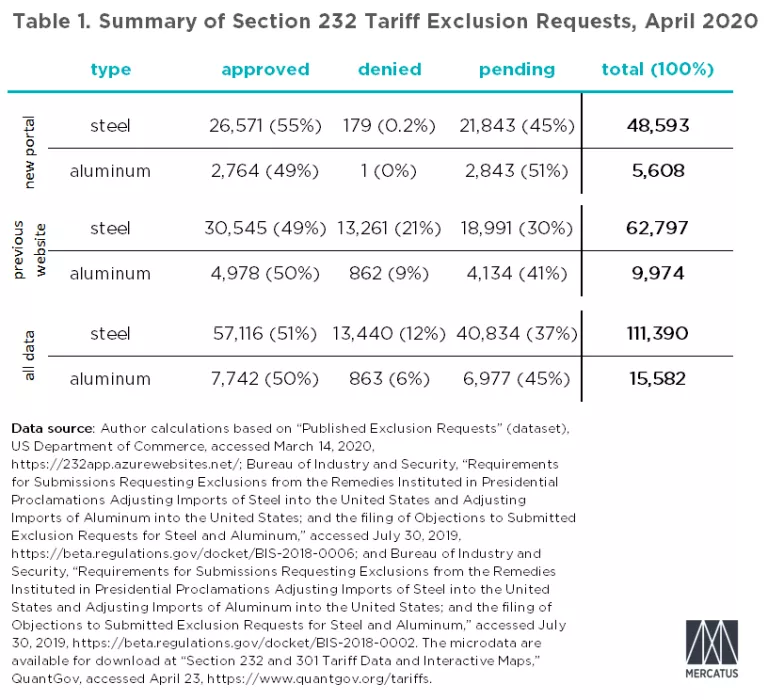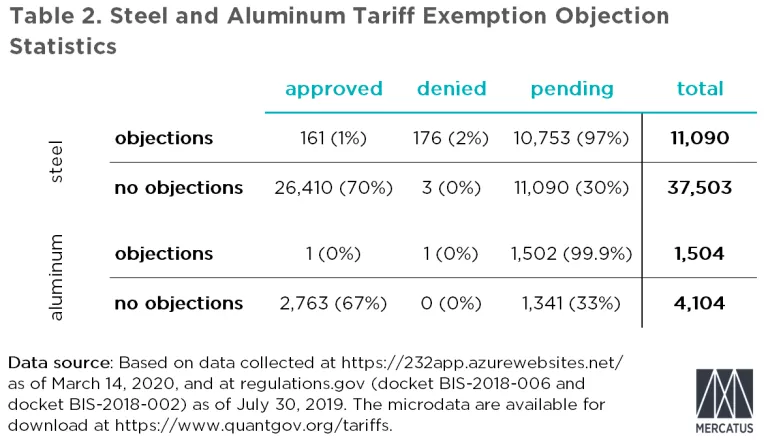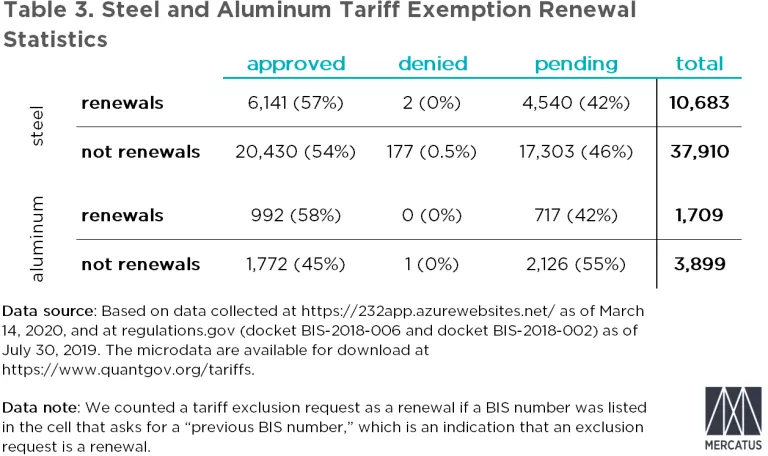- | International Freedom and Trade International Freedom and Trade
- | Expert Commentary Expert Commentary
- |
US Sees Large Uptick in Requests for Steel and Aluminum Tariff Relief While an Economic Downturn is on the Horizon
But objections from steel and aluminum producers are still preventing many manufacturers from getting tariff relief
When the Trump administration first imposed its controversial “Section 232” tariffs on foreign steel and aluminum two years ago, the US economy was growing briskly. But now, the American economy appears to be heading for a substantial downturn as the country deals with the global economic fallout from the COVID-19 pandemic.
Up to this point, US manufacturers have applied for relief over one hundred thousand times through the Section 232 program’s “exclusion request” process. Indeed, since our last update on December 6, 2019, there have been 17,457 new steel tariff exclusion requests and 2,333 new aluminum tariff exclusion requests filed on the new portal. These figures represent a 56 percent increase in steel filings and a 71 percent increase in aluminum filings.
As we noted in our last update, a new internet portal to house exclusion data was created in June of last year, replacing the old portal at regulations.gov. As a result, the data from regulations.gov and the new portal must be combined to get a full picture of exclusion activity.
As table 1 displays, combining the data shows that there have been a total of 111,390 steel exclusion requests, of which 51 percent have been approved, 12 percent have been denied, and 37 percent remain pending. For aluminum, there have been 15,582 exclusion requests, with 50 percent approved, 6 percent denied, and 45 percent pending.

Between June 13, 2019 (when the new internet portal was created), and March 14, 2020, a total of 54,201 steel and aluminum tariff exclusion requests were filed by 732 firms. Breaking this down further, there were 48,593 requests for exclusions from the steel tariff, and 5,608 requests for exclusions from the aluminum tariff on the new portal. The firms that filed steel tariff exclusion requests come from 227 congressional districts, and the firms that filed aluminum tariff exclusion requests come from 116 congressional districts.
As of March 14, 2020, the Bureau of Industry and Security (BIS) of the Department of Commerce had reached a decision on 55 percent of the steel exclusion requests, approving 26,571, denying only 179, and leaving 21,843 pending. In addition, 700 requests had been withdrawn, and 8,889 had an unknown status. Similarly, nearly half or 2,764 of the aluminum exclusion requests had been approved, and only 1 had been denied. Of the remainder of the requests, 2,843 were left pending, 124 had been withdrawn, and 1,272 had an unknown status.
The White House offers temporary relief
Meanwhile, the Trump administration has offered businesses temporary tariff relief, and not just on steel and aluminum imports. A recent executive order provides US importers the option for a 90-day deferment period on the payment of duties, taxes, and fees.
This deferral is welcome relief for the manufacturers that have filed the over 60,000 steel and aluminum tariff exclusion requests, especially for the Section 232 requests that have been denied or remain pending. But it may be too little, too late for many firms, especially the small- and medium-sized enterprises. According to a recent study by Organization for Economic Co-operation and Development, nearly half of all small- and medium-sized businesses fear they will not survive the next three months because of the pandemic and the resulting economic shutdown.
Objections still matter
US steel and aluminum producers have formally objected tens of thousands of times to tariff exclusion requests. Earlier in the Section 232 process, an objection would be more likely to lead to a denial. In our recent update, however, the data indicate that objections are more likely to prompt the government to put those requests on hold. In fact, just 1 percent of the steel tariff exclusion requests that have had an objection filed against them have been approved. For aluminum tariff exclusion requests, the share of those approved is less than one percent (table 2).

While few requests with an objection have been approved, they have not been outright denied either—the vast majority of requests with an objection remain stuck in limbo status, or “pending”: 97 percent of steel requests with an objection remain pending, as do 99.9 percent of aluminum requests with an objection. Unfortunately, for US businesses or manufacturers, a pending status is a de facto denial because they cannot import the material they need without paying the tariff.
Don’t hold your breath for renewals
Tariff exclusions last for only one year and then US manufacturers must file for a renewal. Approximately 22 percent of the steel tariff exclusion requests and 30 percent of the aluminum tariff exclusion requests are renewals. The approval rates for renewals and new requests appear roughly similar (table 3). For steel tariff exclusion requests, 57 percent of steel tariff exclusion renewals have been approved, compared to 54 percent for all other requests. Aluminum renewal requests have had slightly higher approval rates: 58 percent of renewals have been approved, compared with 45 percent for all others.
